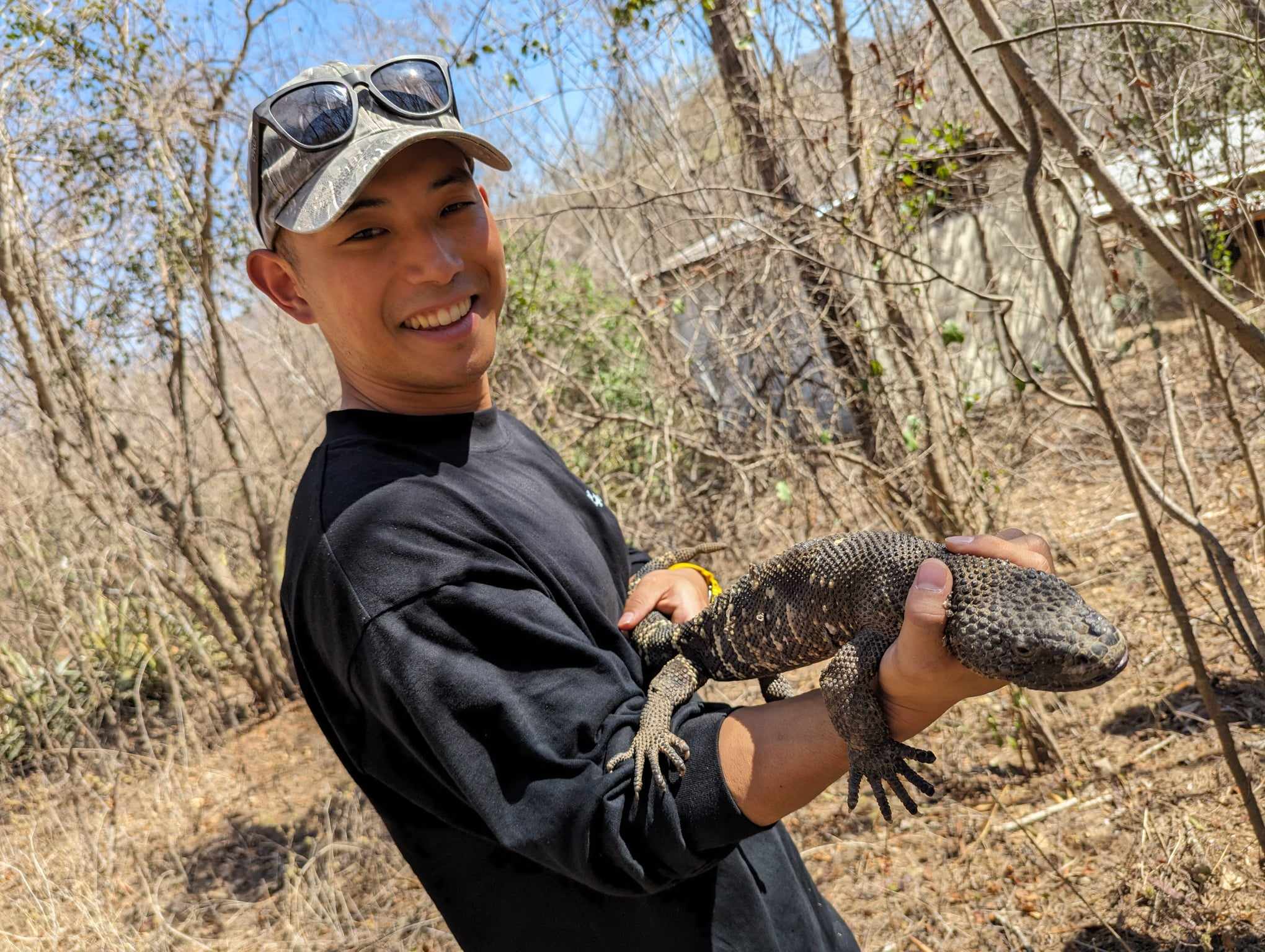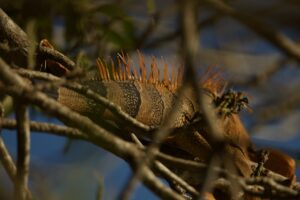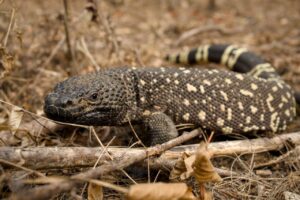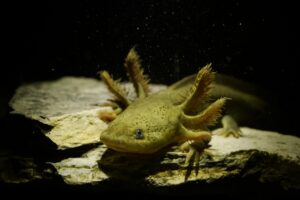I went searching for the Spider-tailed Horned viper (Pseudocerastes urarachnoides), which is found exclusively in the Zagros Mountains of western Iran.
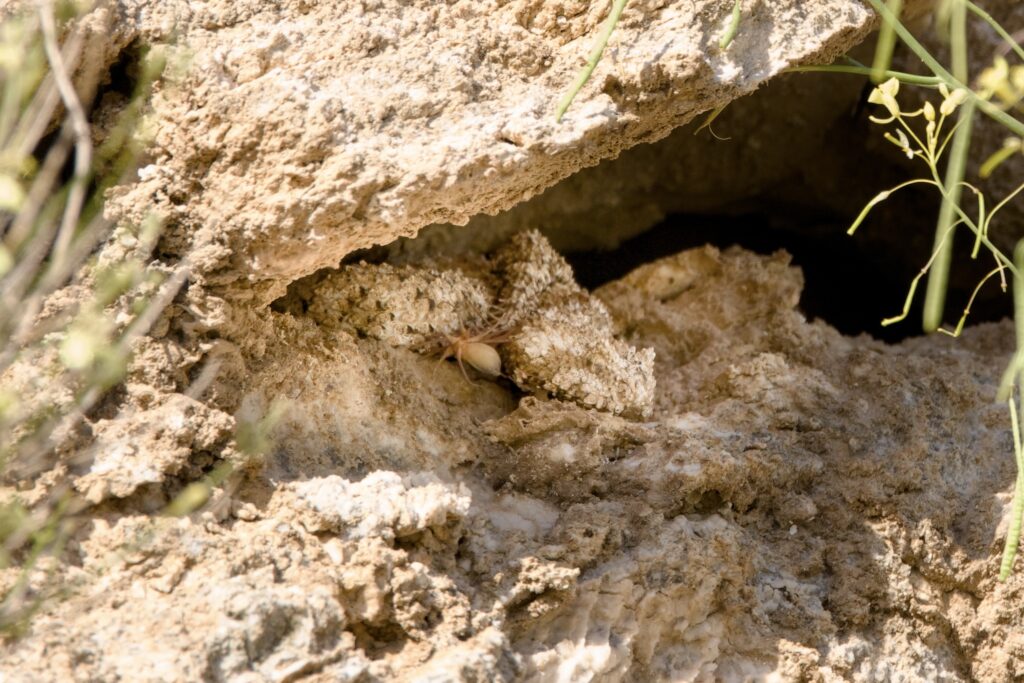
The Spider-tailed Horned viper is a snake that inhabits the harsh desert environment, where resources are limited, and uses its tail, which resembles a spider, to capture birds and other prey.
The habitat was a place of peculiar beauty, with steep slopes surrounded by limestone formations. Due to the harsh environment, few locals venture into this area, and obtaining permits is necessary to enter, making it even more remote.

The hills were riddled with countless holes, where we searched for the hidden snakes.
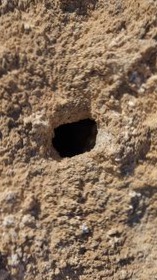
Despite nearly falling off cliffs several times, we persevered, realizing just how challenging it is to find this species. Just as we were about to give up, I felt a sense of unease in a crevice between rocks. Through binoculars, I confirmed it – the Spider-tailed Horned viper.
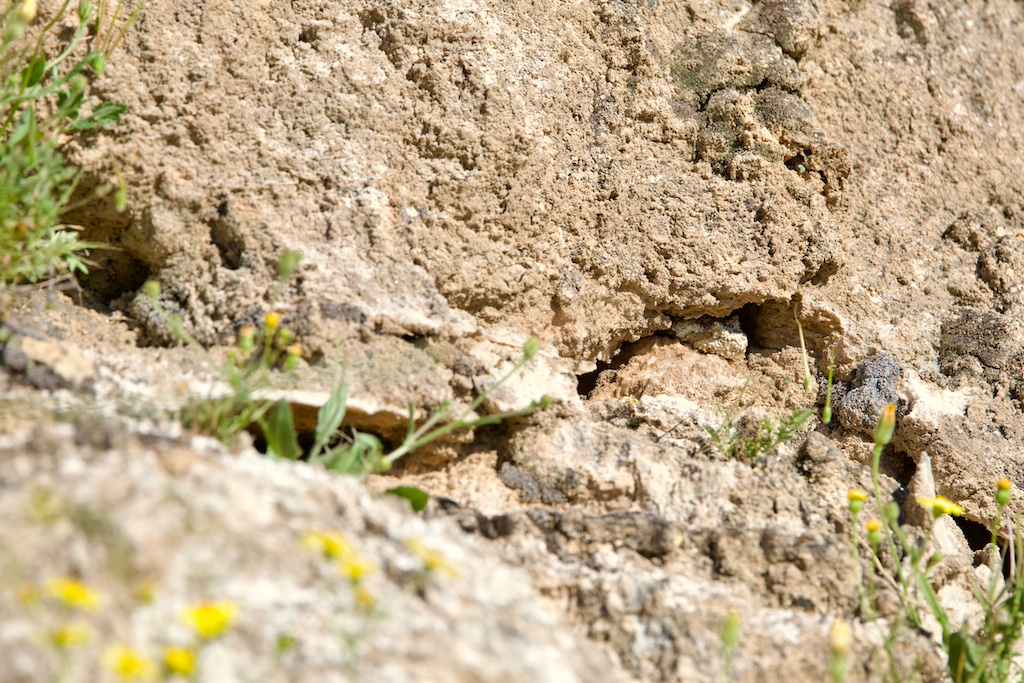
It was truly remarkable how perfectly it blended into its surroundings, to the point where I couldn’t believe I had found it myself. However, from this position, the crucial spider-like tail was not visible. We continued walking in pursuit of a better observation spot, and finally, on the evening of the last day, we caught sight of the tail.
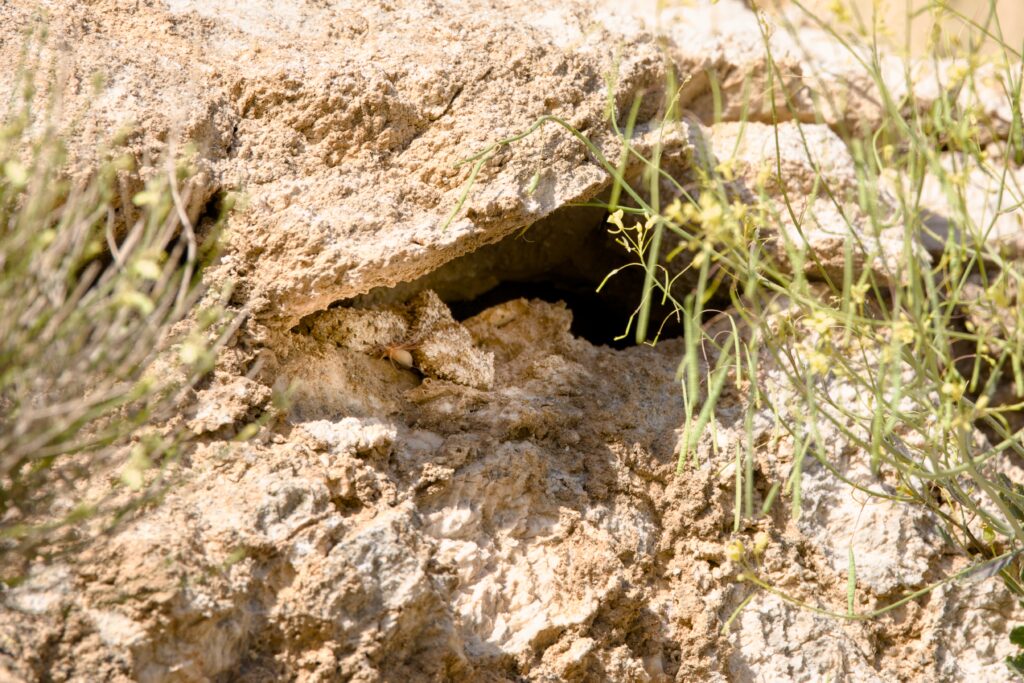
It swiftly retreated into its burrow after a mere minute of observation. Reflecting on the amount of time spent for that one minute, it was staggering, but the result was immensely satisfying.
I had assumed that the Spider-tailed Horned viper fed on birds year-round, but I learned from locals that they prey on birds mostly during specific times of the year. Moreover, most of the birds ensnared by their spider-like trap are migratory, as resident birds have learned to discern the trap.
Spring, when migratory birds abound, coincides with the period of increased activity for reproduction. Presumably, in this resource-limited area, preying on birds proves advantageous for acquiring the substantial energy needed for reproduction, leading to the evolution of this spider-like tail.
Remarkably, on the journey back, we encountered a young individual of the Spider-tailed Horned viper.
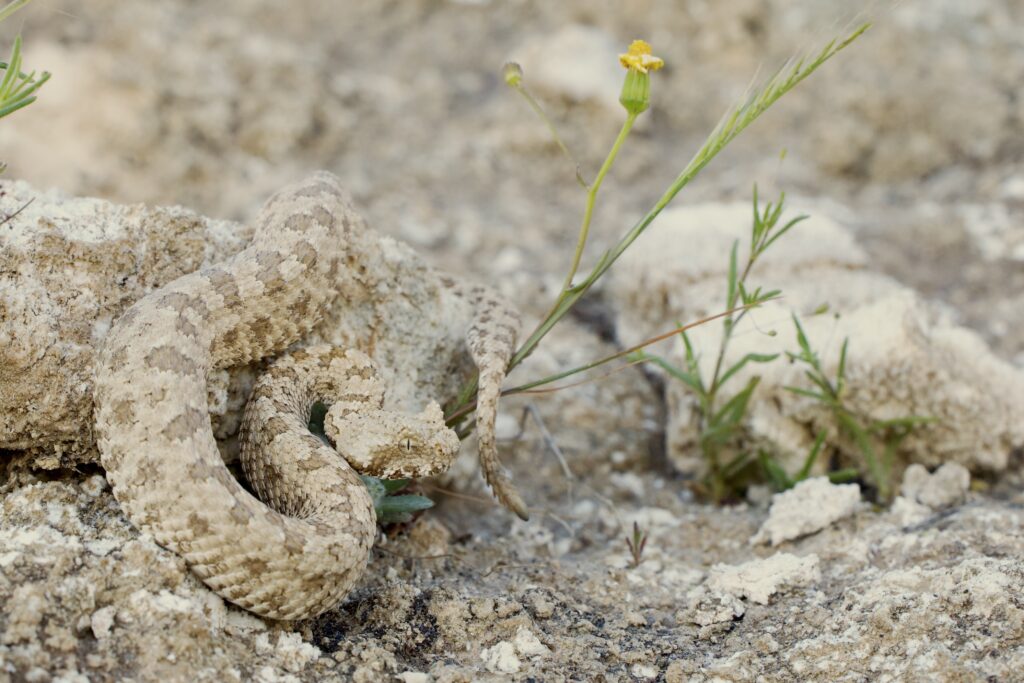
To our surprise, the young viper did not possess the spider-like tail. While it retained the basic scale structure, at first glance, it hardly resembled a Spider-tailed Horned viper.
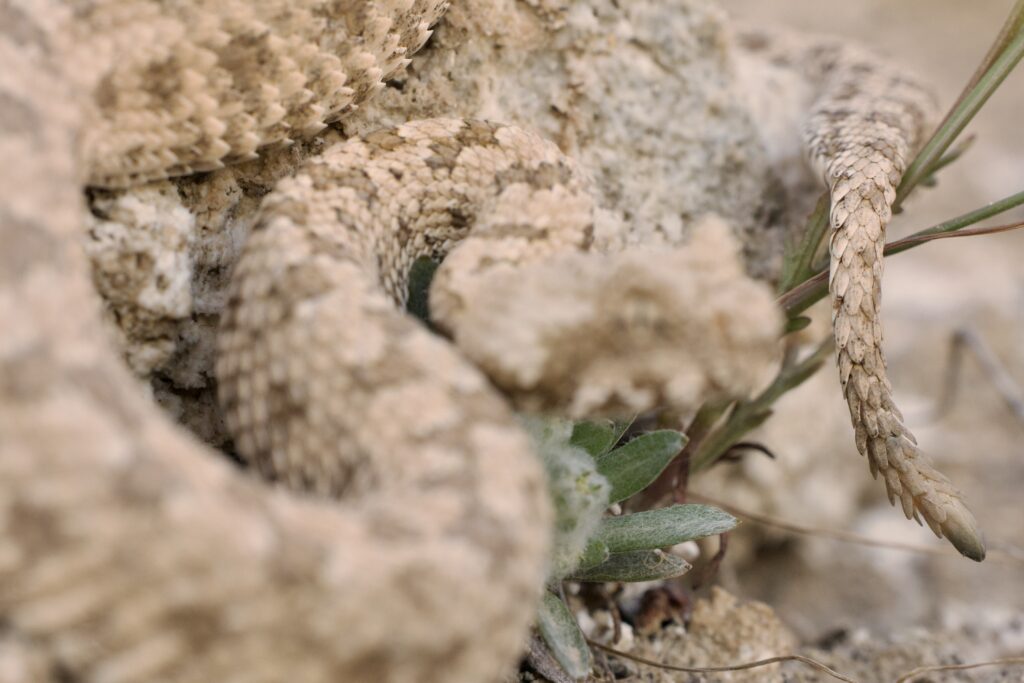
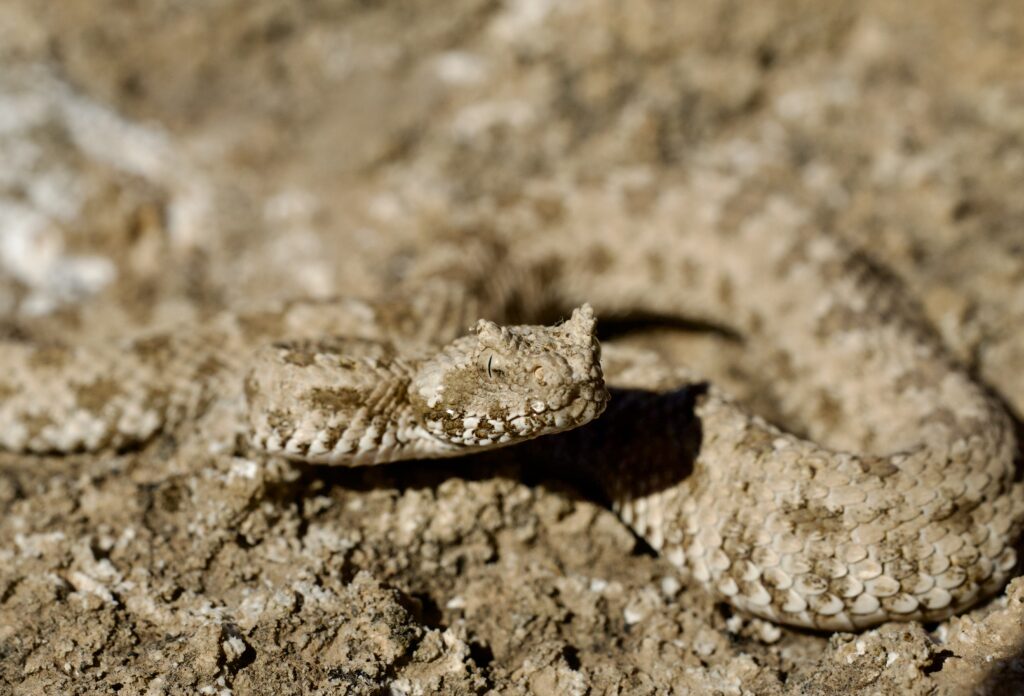
During their youth, they often prey on reptiles such as lizards and geckos, as well as insects. The more I learned, the more mysterious it became. However, their perfect limestone camouflage has been intact since a young age.
Such snakes are found nowhere else in the world except the Zagros Mountains! I hope this serves as a useful reference for those planning to visit.

